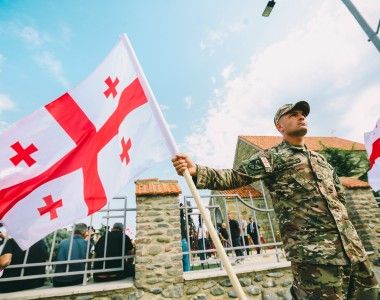Four NATO Battalion Groups On The Eastern Flank. Breakthrough or a compromise?
During the meeting involving the NATO Secretary General, Jens Stoltenberg, and the Polish Defence Minister, Antoni Macierewicz, it was confirmed that four multinational battalion groups would be deployed, in order to defend the NATO’s Eastern Flank.This is a significant step forward, as compared with the Newport decisions, however, it should be complemented with a number of other actions.Jens Stoltenberg, during the press briefing, said that the Warsaw summit is going to be organized at a moment which is critical, in the light of the growing Russian assertiveness, with Moscow reshaping the European borders with the use of force. NATO official also noted that more extremism and violence are also becoming visible in the Northern Africa and in the Middle East.
During the meeting, Stoltenberg was assuring that NATO is continuously enhancing collaboration and reinforcing the military units on the Eastern Flank, which involves decisions that are both military, as well as political. As the Secretary stated, all those decisions have a defensive nature, and they reinforce the alliance. Stoltenberg said that during the Warsaw summit, further actions shall be expected.
According to the NATO Secretary General, the Warsaw Summit will be focused on further reinforcement of the Eastern Flank, particularly through bolstering the multinational component stationed there, on a rotational basis. What is more, actions related to pre-emptive displacement of equipment in the NATO border states should also be expected. This also concerns Poland. Another important step to be taken is seen in collaboration with the NATO partners, in the areas of security on the Eastern and Southern flanks.
During his speech, Antoni Macierewicz confirmed the fat that issues related to rotational deployment of four battalion battle groups and permanent armament storages were being discussed. According to Macierewicz, we may also witness such deployments in Poland. “The size of this group is larger than a battalion, but I would not like to judge the exact number of soldiers, however, the quantity will certainly exceed one thousand troops. With additional support units, more soldiers could be expected – as the Polish official said. The remaining battalions are expected to be deployed in the Baltic states – Lithuania, Latvia and Estonia.
Battalion Battle Group is often considered to be the smallest element which is capable of conducting combat operations autonomously. If the arrangements mentioned above are confirmed during the NATO summit, then within, the territory of the states which are threatened, to the largest extent, allied units are going to remain on alert, maintaining a capability to initiate a defensive operation, without a need to carry out a long distance deployment. This is a qualitative change, in comparison with the arrangements made in Newport, since the rotational presence, as defined back in 2014, had a primarily training character.
In order to make it possible to defend the region and counteract a full scale invasion, it would be desired that forces that are even larger are deployed. Nonetheless the decisions made by NATO are always a result of a compromise (the Germans were to have objections against deployment of four battalions). Land forces of the individual NATO member states are highly burdened with the realized tasks, including peacekeeping operations, NRF rotations etc. The units in question also suffered from significant cuts in the recent years too. Thus, deployment of even 4 – 5 thousand soldiers, all of whom are going to serve away from their permanent bases, along with the command structures, which also requires the units to get their combat readiness restored, poses a challenge, especially for the European NATO member states.
It shall be noted that besides focusing on the forward presence and the Response Force, Warsaw summit should also bring decisions to increase the general potential of the NATO forces, especially in the conventional dimension. This is required, in order to ensure recovery of the capacity to rapidly deploy large units, even corps- or division-sized, which may be an indispensable element of an allied defensive operation that is to be successful.
According to some experts, armies of even the largest European NATO member states, including the United Kingdom or Germany, could face some difficulties in rapid deployment of land units larger than a battalion battle group, also in the light of the aforementioned cuts. This situation shall be rectified, here, significant increase of defence expenditure is required, with a focus placed on “classic” capacity. The activities undertaken up until now, e.g. in Germany, constitute steps in a good direction, however, the scope of those steps may be insufficient.
Read more: NATO Eastern Pivot. “Hard” Capabilities Needed [Commentary]
Macierewicz also stated that NATO Spearhead is ready, but in the opinion of the Polish politician, for effective operation of the element, permanent presence of battalion groups shall be established. “Permanent forward NATO presence is required for the Spearhead to get engaged in operations not too late, which has been a major threat for us so far.The above means that total quantity of NATO forces which would become active, should a threat arise, is very large, and sufficient to provide effective deterrent” - as the Polish Defence Minister noted.



